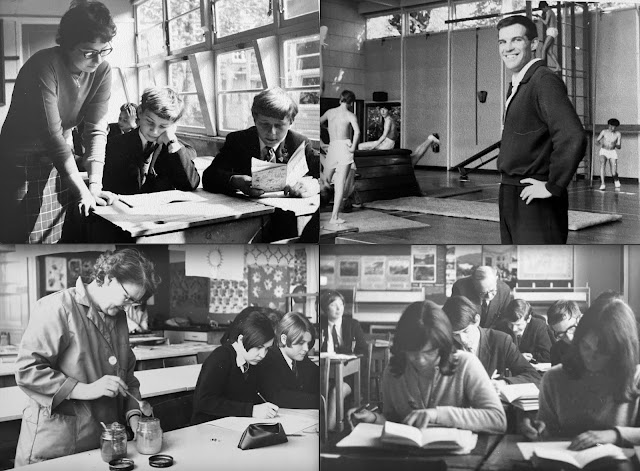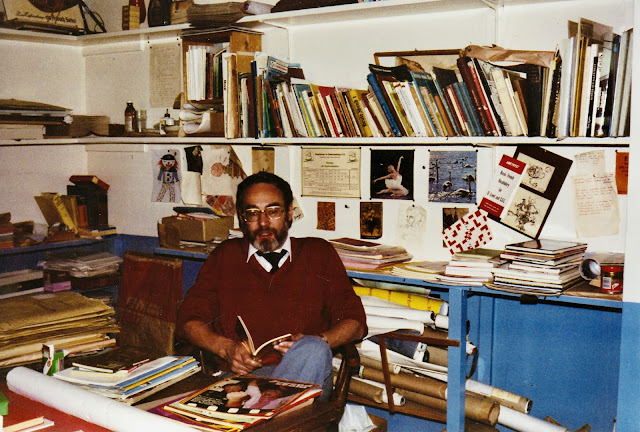Rediscovering The Cock and Pye
This retrospective takes us back more than 50 years and links an old coaching inn on North Hill, a now famous royal portrait painter and a New Zealander who was a direct descendent of Colchester born William Gilberd, the ‘father’ of electricity. They are all connected by the intriguingly named ‘Cock and Pye Society’.
If you walk down North Hill on the left hand side, just before the Sixth Form College, you’ll find two firms of Solicitors separated by a small passageway in the wall with a sign above that reads ‘Cock and Pye Court’.
Cock and Pye Court today
This is the only outward evidence that this building was once an ancient coaching inn called ‘The Cock and Pye’. The buildings date as far back as 1705 in parish registers and the pub eventually closed in 1939. Many years later the Gilberd School bought the building for teaching purposes and began to use some of its rooms as overspill classrooms.
In 1968 the then headmaster of the Gilberd School, John Glazier, wanted older pupils at the school to enjoy more freedom and independence. Following the lead set by the Royal Grammar School (which by this point already had sixth-form common rooms) Glazier decided that the Cock and Pye should be opened as a sixth-form ‘house’ where students could relax, dine and study.
John Glazier - Gilberd School Headmaster 1967-71
The responsibility for carrying out the external work was taken on by the boys of the then lower sixth with the careful supervision of teachers Norman Curd and Ted Woodward. The work consisted of knocking a hole through the existing courtyard wall, allowing steps and a path to be built from the main drive to the Cock and Pye buildings. (The steps are still in use by the Sixth Form College.) Away from the site metalwork teacher Stan Burrow and some of the boys were making the wrought iron gates for the entrance. It’s hard to believe that students would be similarly involved in a school building project today!
Mike Springett, head boy at the school in 1968/69, remembers working on the building project. “‘A’ Levels took a back seat for many of us in the summer term of 1968,” said Mr Springett.
“Bricklaying, painting and gardening took priority to ensure the Cock and Pye was ready for occupation. Once we’d knocked a hole through the boundary wall the whole school became more inquisitive. All day staff as well as pupils kept poking their heads through the wall to see what was going on. Messrs Curd, Woodward and Burrow steered us to victory.”
With the external work complete, structural alterations were made to both buildings during the summer holidays in 1968. This included the conversion of two small classrooms and a kitchen into a larger kitchen and restaurant. A mural was painted by the Upper Sixth's talented artist, Richard Stone, which transformed a bare walI into a colourful yet somewhat controversial piece of art. (Sadly, a rather prudish teacher painted over the entire mural shortly after Mr Stone had left the school.) Mr Stone, who is now a famous royal portrait painter, also painted a new sign for the Cock and Pye which was hung near the steps overlooking the main drive.
Head boy Michael Springett and future royal portrait painter Richard Stone display the sign that Richard painted for the opening of the Cock and Pye in 1968
Edward Gilberd, a philanthropist, keen sportsman and successful businessman was a direct descendant of Dr William Gilberd - one of Colchester’s most famous sons and the ‘father’ of electricity. Mr Gilberd, a third generation New Zealander, had spent 20 years tracing his family tree and had finally made the trip to Colchester in the autumn of 1968. He had visited the public library, museums and local bookshops in search of material about William Gilberd. He had also visited Tymperleys (Dr Gilberd’s old home) and the Holy Trinity Church opposite Tymperleys, where his famous forefather is buried.
He decided to make himself known at the Gilberd School where he immediately struck up a friendship with the headmaster, John Glazier. The two men quickly discovered they had something in common. Both of them had been aboard the cruiser HMS Ajax on a mission to Crete. Mr Glazier had been a radar technician while Mr Gilberd was a New Zealand Army Captain. They had been shipmates without knowing it.
Mr Glazier immediately invited Mr Gilberd to be guest of honour at the opening of the Cock and Pye on the 3rd October 1968. Mr Gilberd gave an address on the history of his famous ancestor and donated £100 for future awards to students.
Edward Gilberd, flanked by the Gilberd School’s head girl and boy, Valerie Cane and Michael Springett, enjoy a joke with other pupils on the steps of the school at the opening of the Cock and Pye on the 3rd October 1968. (Photo courtesy Michael Springett)
Head girl and boy, Monica Sayer and Michael Hamblion, with Edward Gilberd who is presenting a picture of Dr William Gilberd to the school in St Peter’s Church, North Hill on the 11th Nov 1970.
Richard Parker, who was at the school between 1970-78, fondly remembers his time at the Cock and Pye:
Part of the attraction of staying on at the Gilberd sixth form, or joining it from another school, was the freedom and relaxed learning atmosphere. Whilst the lower sixth provided a common room on the top floor of the main building, the upper sixth in the Cock and Pye provided a whole new level of hedonism.
Thanks to Chris Gilberd, Jerry Goodenough, Katy Oxton, Richard Parker, Eddie Ross, Mike Springett and Stephen Willoughby for their invaluable contributions to this article.
Former Head of the Upper School Eddie Ross and Old Gilberdian Richard Parker display the original pub sign which is still kept at the Sixth Form College
Above three photos taken inside and outside the Cock and Pye by Katy Oxton shortly before the school closed in 1985. The last photo features student Rachel Fletcher.
The Cock and Pye Society 1970 - click the photo to enlarge
(Photo courtesy Jerry Goodenough, Key courtesy Jerry Goodenough and Stephen Willoughby)
Back Row: [??], Dave Long, Neil Smart, Ronald Rosenthal, Andrew Fusi, Raymond Jose, Paul Henshall, Chris Fincham, “Penguin” (we can’t remember his real name!), [??], Graham Sims, [??], ‘Boris’ Goodenough, David Schofield, [??], [??], Martin Bowers, [??], Terry Barton, [??], [??], [??].
Middle Row: [??], Nigel Tilbury, Ken Bare, Godfrey Evans, [??], Lesley Gossett, Josephine Dudley, Gillian Abbott, Ann Clifton, [??], Gary De’Ath, [??], Andrew Cock, Janice Nevard, Barbara ‘Plum’ Raymond, Penny De Quidt?, [??], Frances Pigg, [??], [??], [??], Elizabeth Atkinson?, [??], Pippa Last?, [??], [??], [??], Marietta Smith, Pat Gooding?, [??], [??], [??], Andrew Appleby.
Front Row: [??], [??], [??], [??], [??], [??], Adrian Rowe, [??], Miss Wendy Rowlingson, Mrs Went, Mr Wolfendale, Judy Paxton, Mr Anderson, Mr Austin, Headmaster, [??], [??], Adrian Copping, Mr Denham, [??], Roland Pyatt?, [??], [??], Nigel Bunting, James Stock, Gary Goodchild, David Steggles, Alan Ferry, Trevor Cole, Stephen Willoughby, [??].
UPDATE 24th July 2022:
We are very grateful to Graham Sims who contacted us to confirm that Penguin's real name was Tony Wood. Graham informed us that sadly Mr Wood passed away last year.
Note: If you can fill in any other gaps please email us at eddiesphotos@icloud.com





















Comments
Post a Comment